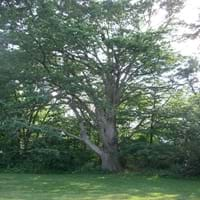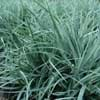Life Span
Annual
Perennial
Origin
South Africa
North America, United States, Northeastern United States, Mid-Atlantic United States, Central United States, South-Central United States, Texas, Mexico
Types
Shasta Daisy
Gloriosa Daisies
Painted Daisy
Pyrethrum Daisies
Not Available
Number of Varieties
Not Available
Habitat
gardens, Grassland
Forests, Ridges, Rocky areas
USDA Hardiness Zone
10-11
4-8
Sunset Zone
8, 9, 12, 13, 14, 15, 16, 17, 18, 19, 20, 21, 22, 23, 24
2a, 2b, 3a, 3b, 4, 5, 6, 7, 8, 9, 10, 11, 12, 14, 15, 16, 17
Habit
Clump-Forming
Oval or Rounded
Flower Color
White, Yellow, Blue, Purple, Orange, Pink, Magenta
Red, Light Green, Chartreuse
Flower Color Modifier
Bicolor
Bicolor
Fruit Color
Not Available
Brown
Leaf Color in Spring
Green, Blue Green
Green, Yellow green
Leaf Color in Summer
Green, Blue Green
Dark Green
Leaf Color in Fall
Green, Blue Green
Yellow, Orange
Leaf Color in Winter
Light Green
Not Available
Leaf Shape
Arrowhead
Lobed
Plant Season
Spring, Summer, Fall
Spring, Summer, Fall
Sunlight
Full Sun
Full Sun
Type of Soil
Loam
Clay, Loam
The pH of Soil
Neutral
Neutral, Alkaline
Soil Drainage
Well drained
Well drained
Bloom Time
Late Spring, Early Summer, Summer, Late Summer, Early Fall, Fall
Spring, Late Spring
Tolerances
Drought
Pollution, Salt
Where to Plant?
Ground, Pot
Ground
How to Plant?
Seedlings, Stem Planting
Seedlings, Stem Planting
Plant Maintenance
Medium
Low
Watering Requirements
Allow soil to be completely dry in between waterings, It cannot sustain wet-feet, Keep the ground moist but not water-logged, Water in morning to avoid prompting diseases, Water twice a day in the initial period
Do Not over Water, Never Over-water, Requires regular watering
In Summer
Lots of watering
Lots of watering
In Spring
Moderate
Moderate
In Winter
Average Water
Average Water
Soil pH
Neutral
Neutral, Alkaline
Soil Type
Loam
Clay, Loam
Soil Drainage Capacity
Well drained
Well drained
Sun Exposure
Full Sun
Full Sun
Pruning
Cut or pinch the stems, Prune regularly, Remove deadheads
Remove damaged leaves, Remove dead leaves, Remove dead or diseased plant parts, Remove hanging branches
Fertilizers
All-Purpose Liquid Fertilizer
Fertilize the first year, No need to fertilize every year
Pests and Diseases
Red blotch
Insects, Red blotch
Plant Tolerance
Drought
Salt
Flowers
Yes
Insignificant
Flower Petal Number
Single
Not Available
Foliage Texture
Medium
Coarse
Foliage Sheen
Not Available
Glossy
Attracts
Bees, Butterflies
Birds
Allergy
Not Available
Asthma
Aesthetic Uses
Beautification, Bouquets, Showy Purposes
Landscape Designing
Beauty Benefits
Not Available
No Beauty Benefits
Environmental Uses
Air purification
Air purification, Amazing growth rate, Food for insects, Nesting sites for birds, No fertilizer, pesticides, or herbicides needed, Prevent Soil Erosion
Medicinal Uses
Cold, Cough, Stomach pain
No Medicinal Use
Part of Plant Used
Flowers
Tree trunks
Other Uses
Showy Purposes, Used as Ornamental plant
Air freshner, Application in Furniture, Economic Purpose, Used as firewood, Used in construction, Used in pulpwood and lumber production, Wood is used for making furniture, Wood is used fore making tools, Wood is used in construction
Used As Indoor Plant
Yes
No
Used As Outdoor Plant
Yes
Yes
Garden Design
Bedding Plant, Container, Cutflower, Foundation, Groundcover, Hanging Basket, Mixed Border, Rock Garden, Wall
Feature Plant, Shade Trees
Botanical Name
OSTEOSPERMUM
QUERCUS muehlenbergii
Common Name
African daisy or Blue-eyed Daisy
Chinkapin Oak, Yellow Chestnut Oak
In Hindi
अफ्रीकी डेज़ी
Chinkapin ओक
In German
African Daisy
chinkapin Oak
In French
marguerite africaine
chinkapin Oak
In Spanish
margarita africana
chinkapin Roble
In Greek
Αφρικανική μαργαρίτα
Chinkapin Oak
In Portuguese
africano margarida
carv Oak
In Polish
Gerbery
Chinkapin Oak
In Latin
African primula
Oak Chinkapin
Phylum
Anthophyta
Tracheophyta
Class
Magnoliopsida
Magnoliopsida
Family
Asteraceae
Fagaceae
Genus
Osteospermum
Quercus
Clade
Angiosperms, Asterids, Eudicots
Angiosperms, Eudicots, Rosids
Tribe
Calenduleae
Not Available
Subfamily
Asteroideae
Quercoideae
Number of Species
Not Available
Not Available
Season and Care of African Daisy and Chinkapin Oak
Season and care of African Daisy and Chinkapin Oak is important to know. While considering everything about African Daisy and Chinkapin Oak Care, growing season is an essential factor. African Daisy season is Spring, Summer and Fall and Chinkapin Oak season is Spring, Summer and Fall. The type of soil for African Daisy is Loam and for Chinkapin Oak is Clay, Loam while the PH of soil for African Daisy is Neutral and for Chinkapin Oak is Neutral, Alkaline.
African Daisy and Chinkapin Oak Physical Information
African Daisy and Chinkapin Oak physical information is very important for comparison. African Daisy height is 15.20 cm and width 45.70 cm whereas Chinkapin Oak height is 1,220.00 cm and width 1,520.00 cm. The color specification of African Daisy and Chinkapin Oak are as follows:
African Daisy flower color: White, Yellow, Blue, Purple, Orange, Pink and Magenta
African Daisy leaf color: Green and Blue Green
Chinkapin Oak flower color: Red, Light Green and Chartreuse
- Chinkapin Oak leaf color: Green and Yellow green
Care of African Daisy and Chinkapin Oak
Care of African Daisy and Chinkapin Oak include pruning, fertilizers, watering etc. African Daisy pruning is done Cut or pinch the stems, Prune regularly and Remove deadheads and Chinkapin Oak pruning is done Remove damaged leaves, Remove dead leaves, Remove dead or diseased plant parts and Remove hanging branches. In summer African Daisy needs Lots of watering and in winter, it needs Average Water. Whereas, in summer Chinkapin Oak needs Lots of watering and in winter, it needs Average Water.





